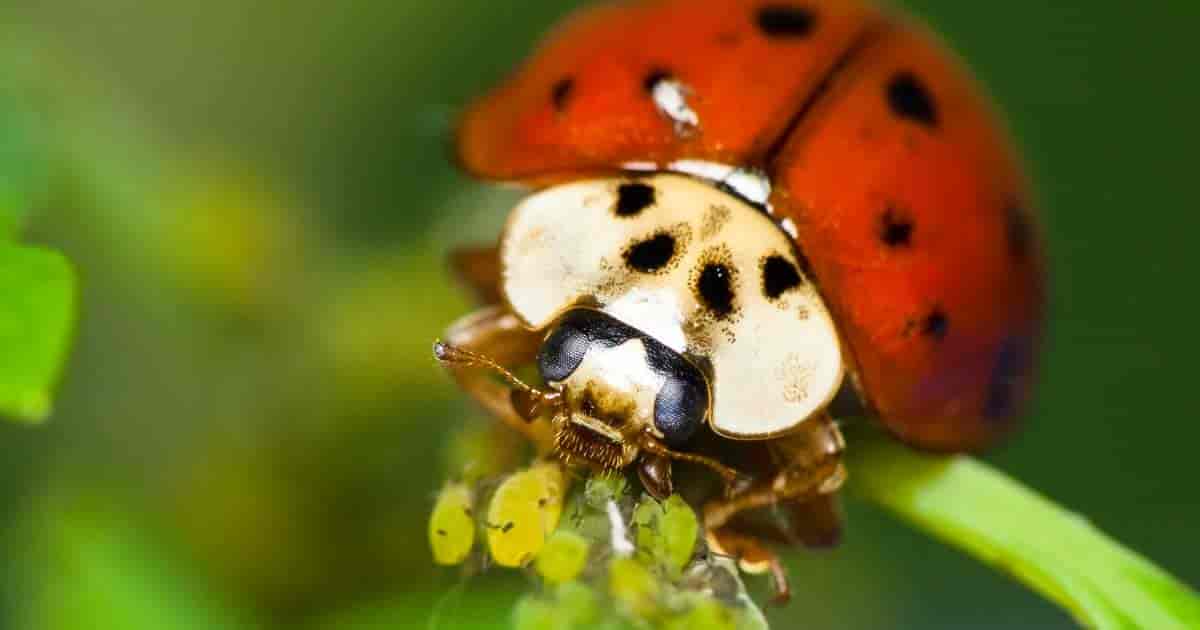Does the ladybug carry a poisonous bite? Get to know the truth behind the toxicity of ladybugs by reading this comprehensive. Get to know these fascinating insects by discovering their potential dangers, debunking myths, and learning essential information about them.
Table of Contents
What are Ladybugs?
The ladybug, also known as the ladybird or lady beetle, is a small beetle belonging to the Coccinellidae family. The world over, nature enthusiasts have taken an interest in and admiration for these beloved insects.
Are Ladybugs Poisonous?
The Coccinellidae family, scientifically known as ladybugs, is generally considered to be harmless to humans. There are however species of ladybugs that possess a defensive mechanism called “reflex bleeding.” When threatened, these ladybugs release yellowish fluid containing toxic alkaloids. The consensus is that it is not harmful to humans when it comes into contact with the skin.
Common Misconceptions About Ladybug Toxicity
1. Ladybugs are highly venomous
Ladybugs are not highly venomous insects, contrary to popular belief. There is a strong tendency for their toxicity to be directed toward potential predators, not at humans. The bite or presence of a ladybug will not pose a serious threat to your health.
2. Ladybugs can cause severe allergic reactions
Ladybugs may cause allergic reactions in some individuals, but severe reactions are extremely rare. The majority of allergies and skin irritations caused by ladybugs are mild and generally resolve without the need for medical treatment.
3. Consuming ladybugs can be fatal
It might seem a bit dangerous to eat ladybugs but rest assured that accidental ingestion of a ladybug is unlikely to cause any harm. A ladybug is sometimes intentionally consumed in some cultures as a source of protein and for their potential medicinal properties.
4. Ladybug infestations are dangerous
The ladybug is generally regarded as a beneficial insect due to its voracious appetite for aphids and other garden pests. There may be times when large numbers of ladybugs swarm together, which is known as a “ladybug swarm,” but these swarms are harmless, and they are usually dispersed on their own.
5. Ladybugs transmit diseases
There is no evidence that ladybugs transmit diseases to humans. A significant pathogen that may pose a health risk is not known to be transmitted by them.
6. Ladybugs are poisonous to pets.
While the reflex bleeding of ladybugs may deter certain predators, there are no known dangers to household pets due to the toxicity of their defensive fluids. Despite that, it is always advisable to monitor your pets and prevent excessive contact with ladybugs, since some animals may suffer from specific sensitivities or allergic reactions as a result of their exposure.
The Fascinating World of Ladybugs

The misconception that ladybugs are toxic has now been clarified. Let us now explore the fascinating world of these beloved insects. Ladybugs are fascinating for several reasons:
Ladybug Lifecycle
The ladybug undergoes a complete metamorphosis, just like the butterfly. There are four distinct stages in the development of these animals: egg, larva, pupa, and adult. The larval stage of ladybugs is particularly fascinating since they appear aggressive compared to their adult counterparts.
Vibrant Colors as Warning Signs
Ladybugs use their bright colors as warning signs to deter potential predators from taking advantage of them. Predators may be deterred from eating insects with these colors because they indicate that they may be distasteful or toxic.
Variety of Species
A variety of over 5,000 species of ladybugs have been identified across the globe. A variety of species exhibit unique colors, patterns, and behaviors, making them a fascinating subject for entomologists and enthusiasts of nature.
Hibernation Habits
There are some intriguing habits associated with ladybug hibernation. It is common for them to seek shelter in leaf litter, tree bark, or rock crevices during the winter. The ladybug swarm is commonly referred to as a “ladybug swarm” in colder regions.
Longevity
Generally, ladybugs live between one and two years, with a lifespan ranging from one to two years. The lifespan of some species has been reported to reach up to three years under favorable conditions.
Must Read: Caring for German Dogs
FAQs
1. How can I safely remove ladybugs from my home?
It may be necessary to relocate ladybugs indoors if you wish to relocate them outside. To do so, gently collect them in a cup or container and release them in an environment that is suitable for them to thrive.
2. Can ladybugs damage furniture or fabrics?
There is no evidence that ladybugs cause significant damage to furniture or fabrics. They may, however, leave behind small stains or release their defensive fluids, which may cause minor discoloration in rare cases.
3. Are ladybugs poisonous if swallowed by pets?
There is generally no harm to pets from swallowing a ladybug.
Conclusion:
There is nothing poisonous about ladybugs, those enchanting beetles that bring joy to so many people. While certain species are capable of producing defensive toxins, their primary purpose is to deter predators instead of harming humans. Ladybugs offer several benefits to our gardens and pose no significant threat to our health.















